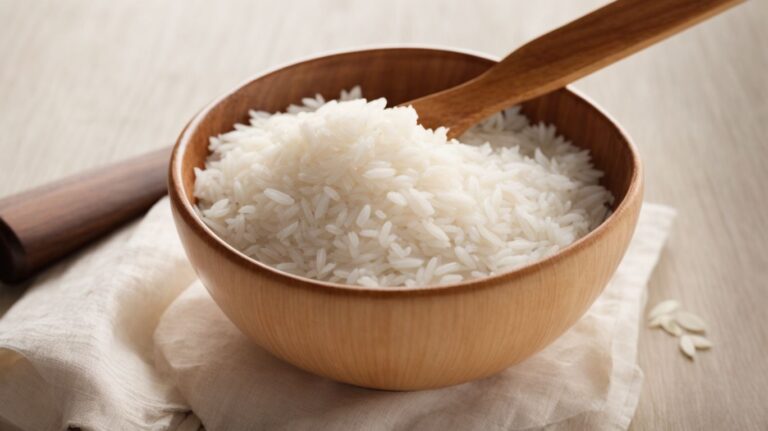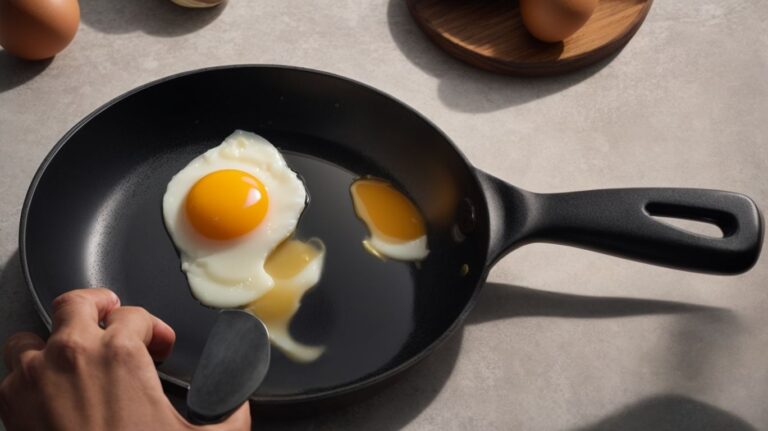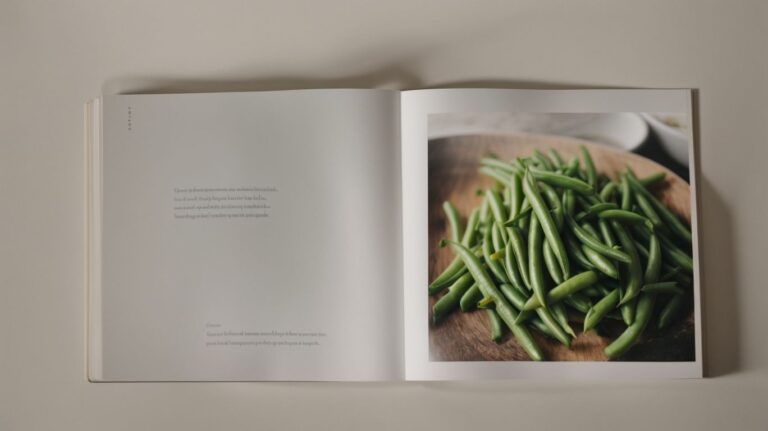How to Cook Frozen Lobster Tails?
Are you ready to take your culinary skills to the next level? In this article, we will be diving into the world of cooking frozen lobster tails. From thawing to serving, we will explore the step-by-step process of preparing this exquisite seafood delicacy. Join me, Chris Poormet, as we uncover the secrets to cooking perfect frozen lobster tails. Whether you’re a seasoned chef or a novice in the kitchen, this guide will provide you with the tips and tricks you need to create a mouthwatering dish that will impress even the most discerning food critics. So, grab your apron and let’s get started!
Key Takeaways:
About the Author: Chris Poormet
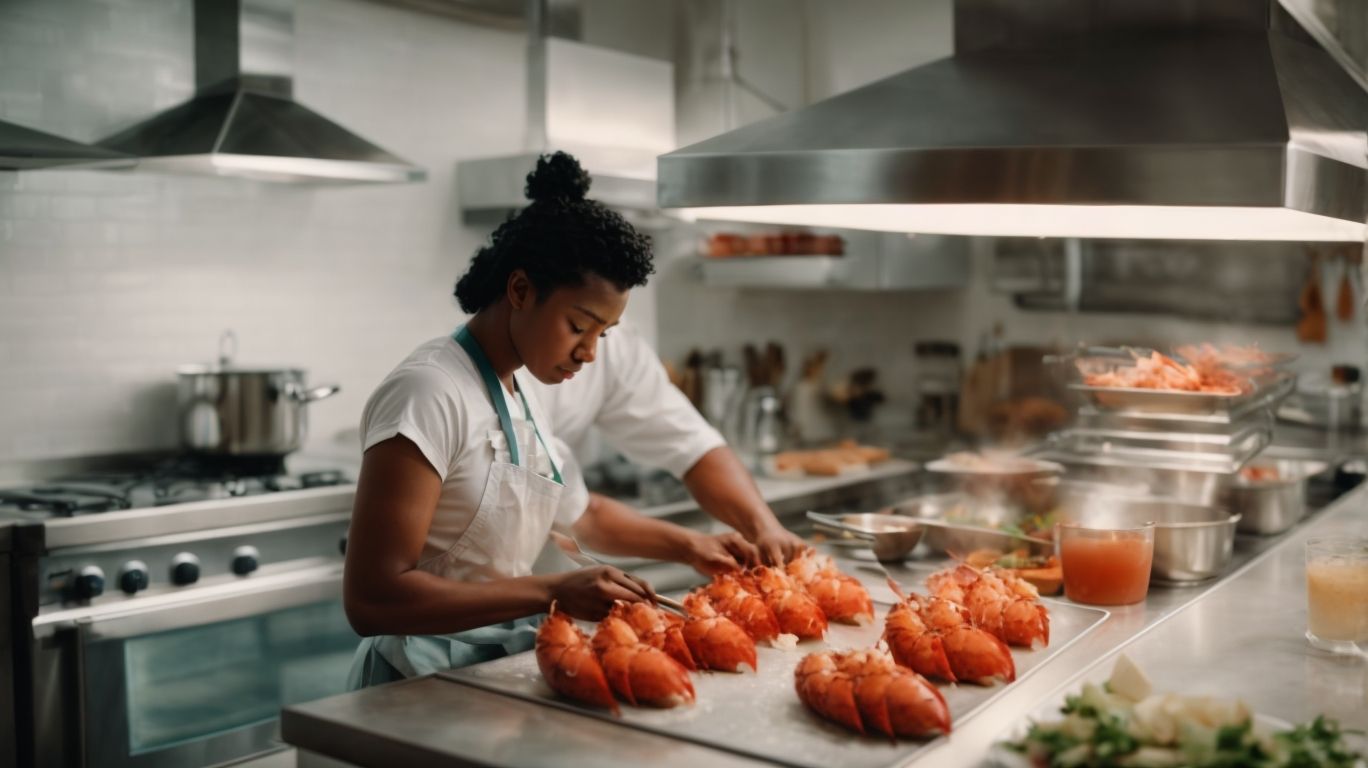
Credits: Poormet.Com – Billy Wilson
Chris Poormet, the owner of Poormet.com, is a renowned culinary blogger who was awarded ‘Culinary Blogger of the Year’ for his expertise. As a former chef with a background in food photography, Chris has garnered a loyal following.
His journey from the bustling kitchen to the digital realm displays his culinary prowess and creativity. Chris’s unique approach to recipes resonates with food enthusiasts worldwide. His blog not only showcases delicious dishes but also offers insightful tips that enable aspiring chefs. Through his passion for food and photography, Chris captures the essence of each dish in a visually captivating manner, setting him apart in the blogosphere. His dedication has not only earned him accolades but also inspired a community of food lovers to explore new flavors and cooking techniques.
What are Frozen Lobster Tails?
Frozen lobster tails are a convenient and versatile seafood option that allows individuals to enjoy the succulent taste of lobster without the need for immediate preparation.
These pre-packaged lobster tails are carefully selected, cleaned, and frozen at their peak freshness, locking in all the natural flavors and nutrients. Regarding taste, frozen lobster tails rival fresh ones, offering a sweet, tender meat that delights the palate.
One of the main advantages of using frozen lobster tails in cooking is their convenience. They eliminate the hassle of dealing with live lobsters, making them a perfect choice for home chefs looking for a hassle-free way to incorporate high-quality lobster meat into their dishes.
Preparing Frozen Lobster Tails for Cooking
Before cooking frozen lobster tails, it is essential to properly prepare and thaw them to ensure the best possible taste and texture in your dish.
Thawing frozen lobster tails is a crucial step that cannot be overlooked. There are a few methods you can use to thaw them. One common method is to place the frozen lobster tails in the refrigerator overnight. This slow thawing process helps retain the flavor and texture of the meat.
Seasoning your lobster tails is another important aspect to consider. You can opt for traditional seasonings like salt, pepper, and garlic powder, or get creative with options like Cajun seasoning or a blend of herbs and lemon zest.
Butter plays a significant role in enhancing the flavor of lobster tails. Whether used for basting during cooking or as a dipping sauce, butter complements the delicate taste of the lobster meat.
How to Thaw Frozen Lobster Tails?
Thawing frozen lobster tails is a crucial step in the preparation process to ensure that the meat cooks evenly and maintains its natural juiciness and tenderness.
There are several methods to safely thaw frozen lobster tails, each with its own benefits based on time and convenience.
- Refrigerator thawing: Place the lobster tails in the refrigerator for 24 hours to allow for slow and even thawing.
- Cold water thawing: Submerge the frozen tails in cold water, changing the water every 30 minutes until fully thawed.
- Microwave thawing: Defrost the lobster tails in the microwave using the appropriate setting to prevent pre-cooking.
Proper thawing is essential to prevent the risk of overcooking or uneven cooking, ensuring a delicious dining experience.
What Tools Do You Need?
To cook frozen lobster tails effectively, you will need a few essential tools and ingredients to ensure that the process is smooth and the results are delicious.
-
Ensure you have kitchen shears on hand to cut through the lobster shells easily. Then, prepare a baking sheet lined with aluminum foil to catch any drippings and make cleaning up a breeze.
-
Having a cooking thermometer is crucial to ensure that the lobster tails reach the optimal internal temperature for safe consumption.
-
Regarding cooking methods, consider steaming the lobster tails for a tender and succulent texture. Alternatively, you can also grill or broil them for a delightful charred flavor.
How to Cook Frozen Lobster Tails
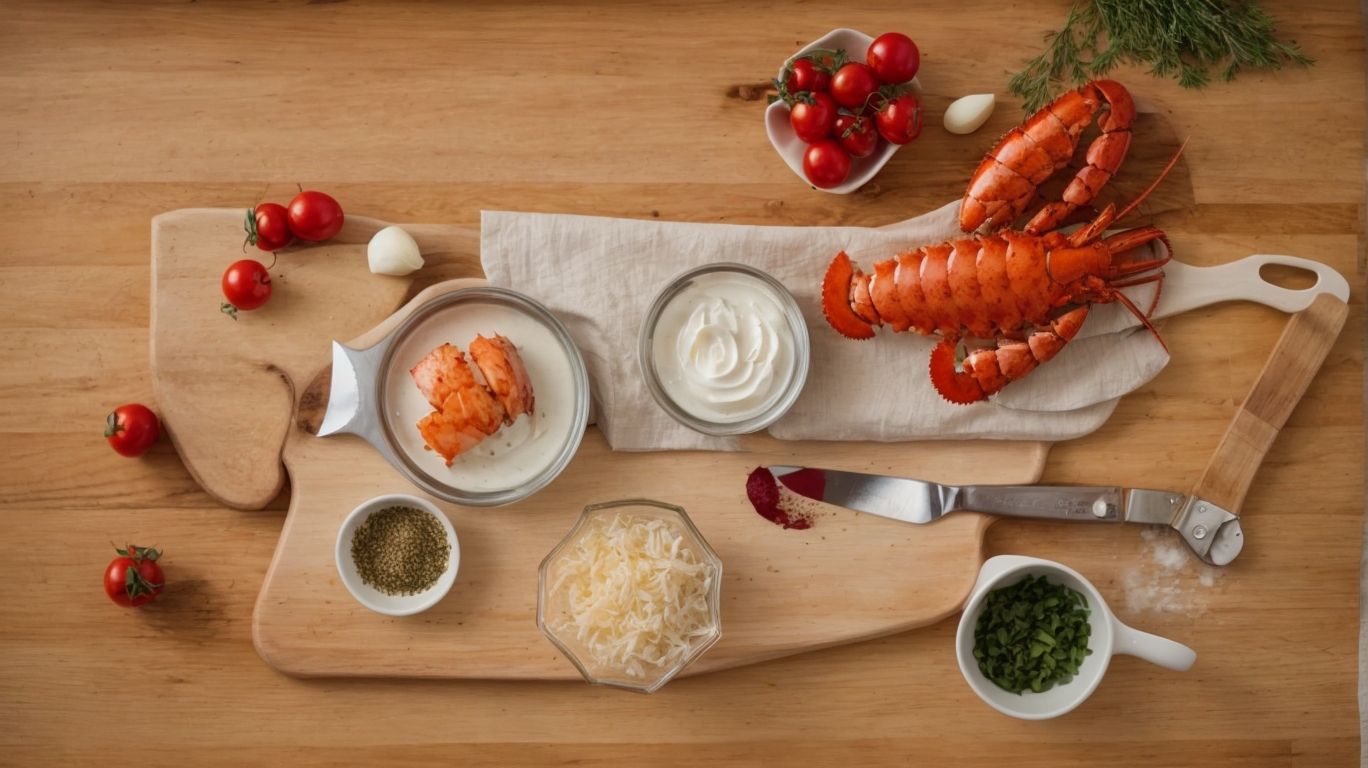
Credits: Poormet.Com – Ronald Harris
Cooking frozen lobster tails can be a delightful culinary adventure, offering various methods to showcase the natural flavors and textures of this decadent seafood.
When boiling lobster tails, start by thawing them in the refrigerator overnight. Bring a large pot of water to a boil and add a pinch of salt. Gently drop the tails into the water and cook for about 1-2 minutes per ounce of tail.
For baking, preheat your oven and split the thawed tails lengthwise. Brush with butter or olive oil, flavor with seasonings, and bake until the meat is opaque and the internal temperature reaches 140°F.
Grilling lobster tails involves butterflying them first, then brushing with a garlic herb butter before grilling over medium heat until charred and cooked through.
Method 1: Boiling Frozen Lobster Tails
Boiling frozen lobster tails is a classic cooking method that helps preserve the natural sweetness and tenderness of the lobster meat while infusing it with flavor.
To start, ensure your lobster tails are thawed completely in the refrigerator if they were previously frozen. This gradual thawing process helps maintain the texture of the meat. Next, bring a large pot of water to a gentle boil. The ideal water temperature for poaching lobster tails is around 140-160°F to prevent the meat from becoming tough or chewy.
Method 2: Baking Frozen Lobster Tails
Baking frozen lobster tails is a popular method that allows the meat to cook gently in its juices, resulting in a rich and succulent dish that is easy to prepare.
First, preheat your oven to 400°F (200°C) to ensure a proper cooking temperature. While waiting for the oven to reach the desired heat, prepare your lobster tails by carefully removing them from the packaging and placing them on a baking sheet.
Next, gently season the lobster meat with a mixture of salt, pepper, and a touch of paprika for a flavorful kick. Consider adding a small pat of butter on top of each tail to enhance the natural flavors and keep the meat moist during baking.
As you place the seasoned lobster tails in the preheated oven, set a timer for around 12-15 minutes. Remember to check on the lobster periodically to ensure it reaches an internal temperature of 140°F (60°C), and the meat turns opaque and tender.
Method 3: Grilling Frozen Lobster Tails
Grilling frozen lobster tails imparts a smoky charred flavor to the meat, creating a unique and delicious dish that is perfect for outdoor gatherings or special occasions.
To begin the process, start by properly thawing the frozen lobster tails in the refrigerator overnight. This gradual thawing helps retain the moisture and flavor of the lobster. Before grilling, it’s essential to prepare the lobster tails by cutting the shell lengthwise and gently easing the meat out while leaving it attached at the base. This technique, commonly known as butterfly-cutting, ensures even cooking and easy access to apply seasoning. Once the lobster tails are prepped, you can season them with a variety of options such as garlic butter, lemon herb, or Cajun spices to enhance the natural sweetness of the lobster. When it’s time to grill, preheat the grill to medium-high heat and oil the grates to prevent sticking. Grill the lobster tails meat side down first, then flip and continue grilling until the meat is opaque and slightly charred, usually about 5-7 minutes per side depending on the size of the tails. Avoid overcooking to maintain the tenderness of the lobster meat. Once cooked, serve the grilled lobster tails with a squeeze of fresh lemon and additional melted butter for a decadent finishing touch.
How to Serve and Eat Cooked Frozen Lobster Tails
Serving and eating cooked frozen lobster tails can be a luxurious experience, offering a multitude of ways to enjoy the succulent and flavorful meat.
For a decadent presentation, consider topping the cooked lobster tails with a rich hollandaise sauce and a sprinkle of fresh chives. Pairing the lobster with melted butter, lemon wedges, and a side of garlic buttered asparagus can elevate the dining experience.
For a more casual setting, serve the lobster meat in a lightly toasted buttered bun to create a delectable lobster roll. Alternatively, you can incorporate the lobster into a creamy pasta dish, such as lobster fettuccine alfredo, for a luxurious yet simple meal.
Experiment with different garnishes, such as microgreens or edible flowers, to add a pop of color and freshness to your lobster presentation. Whether served as a standalone dish or as part of a surf and turf platter, cooked lobster tails are sure to impress your guests with their exquisite taste and elegance.
What to Serve with Cooked Frozen Lobster Tails?
Pairing the right side dishes and accompaniments with cooked frozen lobster tails can elevate your dining experience and create a harmonious flavor profile.
Regarding creating a delightful meal with lobster tails, consider serving them alongside classic accompaniments that complement the subtle sweetness of the seafood. A refreshing lemon butter sauce can enhance the natural flavors of the lobster, adding a rich and zesty element to each bite. A light and crisp garden salad tossed with a tangy vinaigrette can provide a refreshing contrast to the richness of the lobster. For those who enjoy a bit of indulgence, a side of garlic butter mashed potatoes offers a creamy and savory counterpart to the tender lobster meat.
How to Eat Cooked Frozen Lobster Tails?
Eating cooked frozen lobster tails can be a delightful experience, and there are various methods to enjoy the succulent meat, depending on personal preferences and culinary creativity.
One popular way to savor the luscious flavors of cooked frozen lobster tails is by simply steaming or grilling them. This helps retain the natural sweetness and juiciness of the meat. To extract the tender lobster meat, use a pair of kitchen shears to carefully cut open the shell, then gently pull the meat out in one whole piece. Alternatively, you can also use a fork or lobster pick to meticulously remove every delicious morsel.
For a touch of elegance, consider serving the lobster meat on a bed of garlic butter-infused linguine or alongside a zesty lemon and herb risotto. These accompaniments complement the delicate taste of lobster tails beautifully.
Tips and Tricks for Cooking Frozen Lobster Tails

Credits: Poormet.Com – Terry Jones
Mastering the art of cooking frozen lobster tails requires practice and attention to detail, but with the right tips and tricks, you can create exquisite dishes with ease.
When selecting frozen lobster tails, opt for ones that are firm and intact, without any off odors. Thawing them properly is crucial; place the tails in the refrigerator overnight for a slow thaw or submerge them in cold water to expedite the process. Do not thaw them in warm water as this can affect the texture and flavor.
For cooking, consider boiling, steaming, broiling, or grilling the lobster tails. Each method imparts a slightly different flavor profile, so choose based on your preference. Ensuring they are cooked to the right internal temperature is vital; this is typically achieved in 8-12 minutes depending on the size of the tails.
How to Tell if Frozen Lobster Tails are Cooked?
Determining the doneness of frozen lobster tails is essential to ensure that the meat is cooked to perfection and safe for consumption.
Several visual and tactile cues can help you determine if your frozen lobster tails are fully cooked. Texture is a key indicator; the meat should be opaque and firm but still tender. Lobster tails typically turn from a translucent grayish color to a vibrant white when cooked. This change in color is a significant sign of doneness. To be extra sure, you can use a food thermometer to check that the internal temperature has reached 140°F. Avoid overcooking the lobster tails as this can result in tough and rubbery meat.
How to Avoid Overcooking Frozen Lobster Tails?
Preventing overcooking of frozen lobster tails is crucial to maintain their tenderness and flavor, and using the right cooking method and timing is key to achieving perfect results.
When cooking frozen lobster tails, ensuring that the meat is neither undercooked nor overcooked requires precision and attention. A helpful strategy is to thaw the lobster tails gradually in the refrigerator before cooking to allow for even cooking.
Monitoring the cooking times closely and adjusting heat levels accordingly is essential to avoid drying out the meat. Incorporating a generous amount of butter while cooking helps in enhancing the flavor and keeping the meat moist.
By following these techniques, you can enjoy perfectly cooked lobster tails that preserve the natural sweetness and texture of the meat.
How to Enhance the Flavor of Cooked Frozen Lobster Tails?
Enhancing the flavor of cooked frozen lobster tails can be achieved through various methods, such as seasoning, marinating, or incorporating complementary ingredients to elevate the taste profile.
One effective way to season frozen lobster tails is to create a garlic butter mixture with minced garlic, melted butter, a squeeze of lemon juice, and a pinch of salt and pepper.
Alternatively, try marinating the lobster tails in a mix of olive oil, fresh herbs like thyme and parsley, and a hint of crushed red pepper flakes for a savory kick.
For a delicious flavor pairing, consider serving the lobster with a side of risotto infused with saffron to add a touch of luxury to your meal.
Frequently Asked Questions
How to Cook Frozen Lobster Tails?
What is the best way to cook frozen lobster tails?
The best way to cook frozen lobster tails is by boiling or steaming them. You can also bake them in the oven or grill them for a delicious smoky flavor.
How long does it take to cook frozen lobster tails?
The cooking time for frozen lobster tails will depend on the method you choose. Generally, they take about 8-10 minutes to boil or steam, 12-15 minutes to bake, and 6-8 minutes to grill.
Do I need to thaw frozen lobster tails before cooking?
It is recommended to thaw frozen lobster tails before cooking for the best results. You can thaw them by placing them in the refrigerator overnight or by submerging them in cold water for 30-45 minutes.
Can I cook frozen lobster tails in the microwave?
Is it safe to cook frozen lobster tails in the microwave?
While it is possible to cook frozen lobster tails in the microwave, it is not recommended as it can result in uneven cooking and tough texture. It is best to stick to traditional cooking methods for the best results.
Are there any special instructions for cooking large frozen lobster tails?
If you are cooking large frozen lobster tails, you may need to adjust the cooking time accordingly. It is recommended to add an extra 2-3 minutes of cooking time for every additional ounce of lobster.
Can I add seasoning to the lobster tails while they are still frozen?
Yes, you can add seasoning to frozen lobster tails before cooking them. It is best to thaw them slightly before seasoning to allow the flavors to penetrate the meat. Alternatively, you can also add seasoning after cooking.


